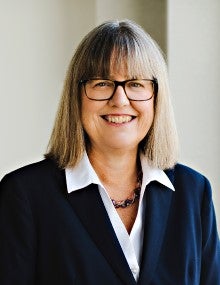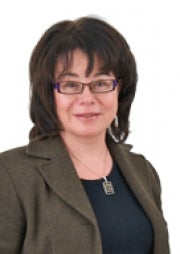Today, two prominent Waterloo scientists were among the 60 exceptional scientists selected to be Fellows and Foreign Members of the Royal Society, the United Kingdom’s national academy of sciences.
Physicist Donna Strickland and Chemist Linda Nazar were both elected for their outstanding contributions to their field and scientific understanding.
Admitting up to 52 fellows and 10 foreign members out of about 700 candidates each year, the fellowship recognizes scientists who have made substantial contributions to their fields.
"While election to the Fellowship is a recognition of exceptional individual contributions to the sciences, it is also a network of expertise that can be drawn on to address issues of societal, and global significance," said Venki Ramakrishnan, President of the Royal Society. "This year’s Fellows and Foreign Members have helped shape the 21st century through their work at the cutting-edge of fields from human genomics, to climate science and machine learning."
Donna Strickland, Nobel Laureate in Physics

CPA enables the most intense laser pulses ever created. Before the invention of CPA, you could not have a pulse that is both short and intense. CPA got around that problem and creates ultrashort, high-intensity laser pulses. The technique involves stretching the laser pulse before trying to make it more intense.
This revolution in laser science has led to advances in fields as diverse as astrophysics, surgery and nuclear fusion research.
Some of Strickland’s current research involves taking the short, intense pulses of CPA lasers of one-quadrillionth of a second to help capture images of processes that take place in molecules. These freeze-frame movies will reveal new information about energy movement within a molecule. Seeing chemistry in action will unlock a mystery of science and has infinite potential for future discovery.
This December, Strickland was appointed in the Order of Canada at the highest level as a Companion of the Order of Canada, to recognize her international achievement. Earlier this week, she was also elected into the National Academy of Sciences as one of 26 international fellows.
Linda Nazar, University Professor and Canada Research Chair

Nazar is widely recognized for her pioneering work on energy storage materials with topics that span Li-S and Li-O2 batteries; Li-ion, Na-ion, Mg-ion and Zn-ion batteries, solid state electrolytes, and the role that nanotechnology plays in energy materials science.
She has published more than 200 papers, review articles, and patents in the field which were cited over 19,000 times.
Her work has earned her a place on the Web of Science’s 2014, 2016 and 2017 Highly Cited Researcher Lists. Last year, she was named a Clarivate Analytics' (formerly Thomson-Reuters) Highly Cited Researcher in both the fields of Chemistry and Materials Science.
In 2015, Nazar was named an Officer for the Order of Canada in recognition of her excellence in research. She also holds the Canada Research Chair in Solid State Energy Materials and is a Fellow of the Royal Society of Canada.
Congratulations Donna and Linda!